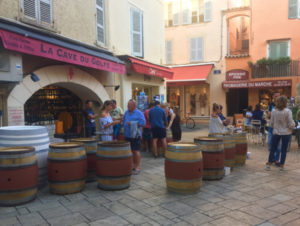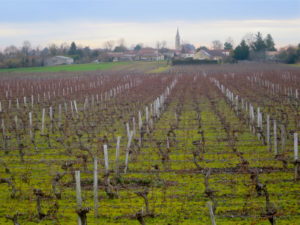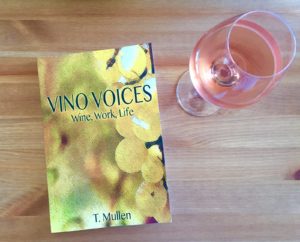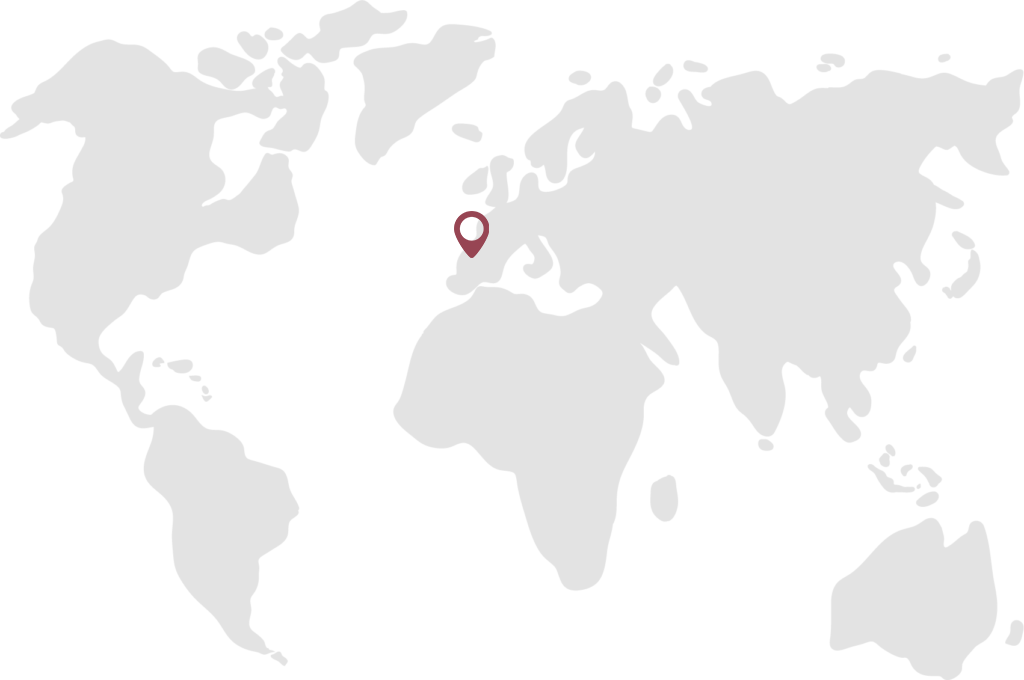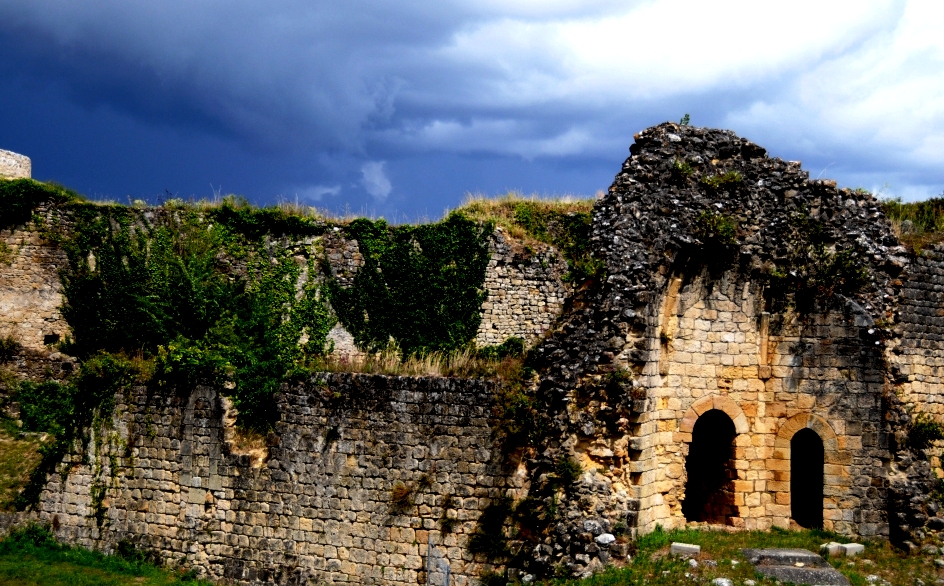
This is where it all changes. Close to where it all began.
The Gironde Estuary – the widening river mouth of southwest France that flows into the Atlantic Ocean – flows after the joining of the Garonne River (to the south) and the Dordogne River (to the east) near the city of Bordeaux. This estuary splits the larger Bordeaux region into two – the Left Bank and Right Bank. Times are changing. Fast. Pricier wines along the Left Bank are losing the spotlight to some amazing Right Bankers – which often cost Very Little (less than 20, even 10 Euros).
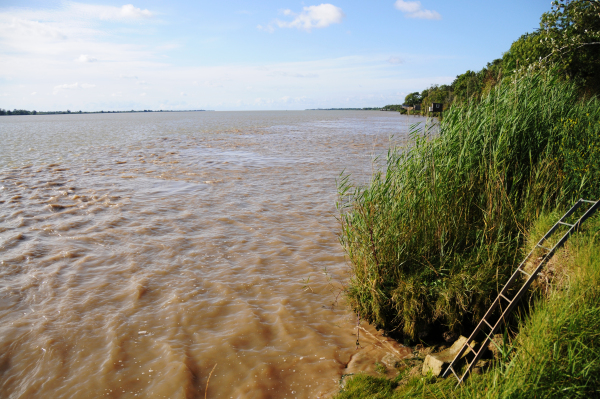
Many Right Bank wines are undeserved underdogs – overlooked and inexpensive – that are often elegant jewels. Right Bankers were not included in the famous 1855 classification of Bordeaux wines (or the little known classification of 1797 by future US president Thomas Jefferson who visited Bordeaux – and listed the same top four Grand Crus as Napoleon’s scouts did decades later). Who knows – maybe crossing the Gironde’s choppy waters back then to stay and sample Right Bankers was considered dicey. Regardless – the coming years should see an increased shift in wine appreciation here.
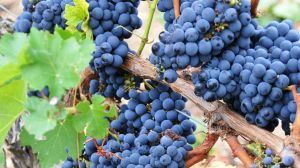
Here are samplings and stories about worthwhile, up-and-coming (as well as established) Right Bankers.
Friends living on the Right Bank who make or deal in wine recommended the following. Local knowledge. Considering that this web log Vino Voices forms a niche, and not a very greatly circulated niche, these insights are still fresh, and still little known.
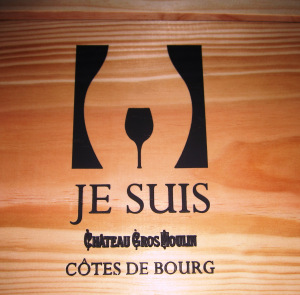
Je Suis
Je Suis is seductive. It’s also bold and unusual. The label is racy, even for the sexy French. Its motto is – From the Earth’s Very Own Erogenous Zone. This Right Bank red is anomalous for two reasons.
First, the wine includes 80 percent Cabernet Franc, and 20 percent Merlot – smashing the traditional right bank motif of blends being predominantly made from Merlot, or occasionally Cabernet Sauvignon. Stranger still – the architect of this wine from Château Gros Moulin (Big Mill) is not a bold, brash dabbler in novelty, but a seasoned and respected eleventh-generation winemaker from this region. After creating this novel blend, he fermented the wine in cigar-shaped new oak barriques.
Second – outside the village of St. Emilion, but still east of the waters of the Gironde Estuary – this may be a forthcoming Icon wine for the Right Bank. It will last for decades, and the quality is excellent. Priced at 95 Euros a bottle (which also includes shipping anywhere in the world), it’s an exception to the inexpensive Right Bankers in general – but is carving a clean new identity for this Côtes de Bourg / Côtes de Blaye region.
In two years Je Suis will be a meat lover’s darling. Even now, though still tannic, you can enjoy complex, chewy, pleasurable foreplay for what’s to come after a few more years in the bottle. Roll over, Right Bank traditions. Je Suis means ‘I Am’ – perhaps a declaration of arrival by the Right Bank. Only 1,500 bottles made.
The Secret
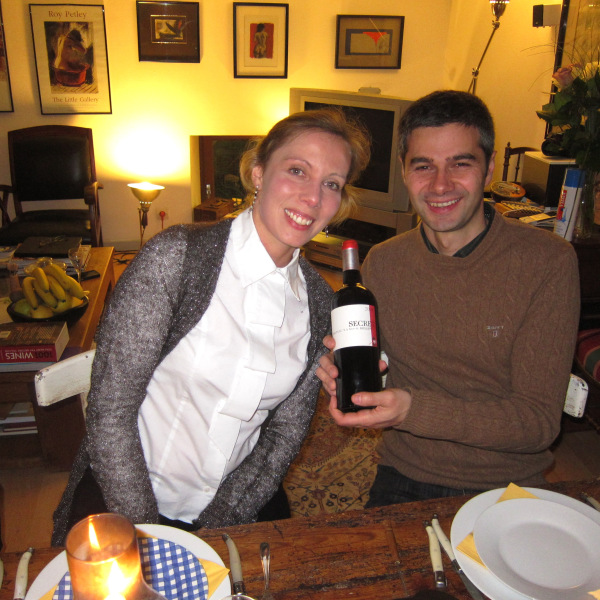
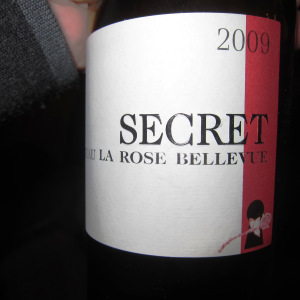
I had the fortune to spend New Year’s eve with Jérôme Eymas and his wife Valérie (the winemaker and marketing manager, as well as co-owners for Château La Rose Bellevue winery – www.chateau-larosebellevue.com), and managed to sample bottles of both their 2005 and 2009 The Secret (thanks for the evening, Les and Clarissa of Villa St. Simon).
The Secret is a 100 percent Merlot made only during select years (2005, 2009, 2010), with production limited to 3,000 bottles. This wine spends 18 months in new oak and is limited in production by Jérôme – the polite, happy, and wildly energetic young winemaker (who is always agreeable to talk, drink, and share ideas).
This Grand Vin de Bordeaux is a (right bank) Premières Côtes de Blaye [nowadays known as Blaye, Côtes de Bordeaux] – it’s motto being, Tout Secret doit être bien gardé (all secrets must be well kept).
Valérie insists that wines don’t have to be either expensive or exclusive. Considering that The Secret represents only 1 percent of their output in the scant years that it’s made – she means what she says. But, that 1 percent? Nice one guys. Don’t keep it so secret.
The 2005 Secret, to my simple taste buds, is oak and smoke, liquorice and leather. After fifteen minutes in the glass, florals march out, as well as a beefy whiff of tar. This is hefty and well-balanced.
The fresher 2009 Secret is cherries and chocolate, raisins and a wee bit of olive oil. After fifteen minutes in the glass, even more chocolate oozes out. And then – the taste of plums?
[Check out a previous post about Château La Rose Bellevue].
During our dinner, we were joined by Alain from Blaye, a medical doctor who spends many free evenings tasting Bordeaux wines blind with friends (in some quasi-mysterious group known as the wine philosophy club…ah, secretive). Alain asked me how I would rate this wine – after telling me he gave it an 18 out of 20 (90 points). At least, I agreed.
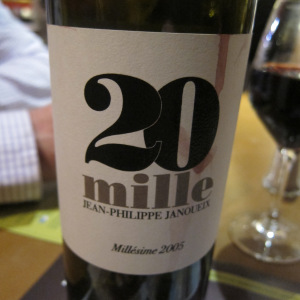
20 Mille – Jean Philippe Janoueix
This Right Bank winery is on the east bank of the Dordogne. 20 Mille embodies an odd concept. The trend toward better quality wines in Europe during the past century means that growers reduce their number of vine clusters to grow plumper, more flavor laden grapes. This produces a lesser quantity of wine – but of better quality, for which winemakers can charge more. ’20 mille’ means twenty thousand – which is the number of vines grown per hectare – far above a more normal number of 12,000 for this region.
20 Mille grows more vines per hectare – because physically challenged vines produce better quality grapes (the competition causes roots to sink deeper to soak up more water and nutrients – hence enhancing flavor). However the growers here then discard many grape clusters – choosing only the fittest as being suitable to harvest. First – flood the vineyard with grapes to boost the overall competition, then keep only the hardiest survivors.
Ruthless, but effective. This smooth Bordeaux – 100 percent Merlot – still has plenty of backbone. It goes well not only with meat, but also with grilled duck (roast chicken? Perhaps. Go on, ditch the white wine for poultry paradigm, and give it a try).
Château Rouselle
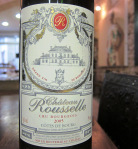
This 2005 Côtes de Bourg is hefty and tannic, but sings a different tune after fifteen minutes in the glass. It loosens up and throws out the taste of sweet berries. This is a classic right bank blend – oaky and bold. About 17 Euros a bottle.
Château La Grolet
The 2009 Chateau L Groulet is a Côtes de Bourg biodynamic wine – which means no green harvest, no pesticides, and the land is plowed to reduce insect infestation. At about fifteen Euros a bottle, this is a bargain. Solid Right Bank winemaking at a reasonable cost. The young wine is smooth and oaky, but more balanced than many Napa reds (no offense) that cost four times as much.
Thanks for tuning in. The Right Bank will be back…
